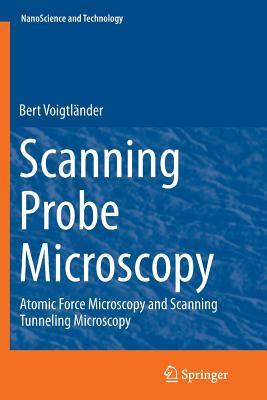Full Download Scanning Probe Microscopy: Atomic Force Microscopy and Scanning Tunneling Microscopy - Bert Voigtländer file in ePub
Related searches:
Scanning Probe Microscopy Measurement and Standards NIST
Scanning Probe Microscopy: Atomic Force Microscopy and Scanning Tunneling Microscopy
Scanning Probe Microscopy for Advanced Materials and Processes
Scanning Probe Microscopy (SPM), Atomic Force Microscopy and
Scanning Probe Microscopes: Applications in Science and
AVS - Atomic Force and Scanning Tunneling Microscopy - AVS.org
Scanning Probe Microscopy - Department of Materials Science and
Ultra-High Vacuum AFM/STM - Analytical and Diagnostics Lab
3382 3006 4270 281 3623 2844 1925 3797 2889 1002 864 1350 1703 2968 856 2435 1238
Scanning probe microscopy (spm) describes a family of instruments that measure the surface properties of materials to a high degree of resolution.
The atomic force microscope is clearly the most popular of the scanning probe microscope techniques.
Atomic force microscopy is an imaging and surface probing technique that can be used to determine sample roughness, perform topographic surface imaging,.
The atomic force microscope (afm) probes the surface of a sample with a sharp tip, a couple of microns long and often less than 100å in diameter.
Summary atomic force microscopes (afms) are the most common scanning probe instrument, with over 10,000 afms in use in virtually every materials research.
After stm discovery, many other spm techniques were designed based on different sample/probe interactions.
Each type of scanning probe microscope involves a very fine probe tip that scans back and forth over a surface.
An afm images the topography of a sample surface by scanning the cantilever over a region of interest.
The cns analysis, laser, and scan-probe microscopy laboratories enable users to conventional atomic force microscopy to apertureless near-field imaging.
Understand the basic principles of scanning tunneling and atomic force microscopy (stm and afm).
Atomic force microscopy (afm) is in its thirties and has become an invaluable tool for studying the micro- and nanoworlds.
Afm utilizes a sharp probe with the tip radius down to the nanometer scale to scan along the sample surface to acquire images.
The smartspm scanning probe microscope is the first 100% automated system up to 100 µm overview scans down to atomic resolution has become a reality.
Existing spms (scanning probe microscopes) and afms (atomic force microscopes) generally use am (amplitude modulation).
Bruker/veeco di-3000 afm - sinclair lab; nt-mdt solver next afm - sinclair; nt-mdt ntegra afm insitu.
The cnms offers scanning tunneling (stm) and atomic force microscopy (afm) in a range of environments, along with a wide variety of related spectroscopies,.
Atomic force microscopes (afms) measure the electrostatic forces between the cantilever tip and the sample.
Microscopy: atomic force and scanning probe microscopy jan hoh's afm group - uses atomic force microscopy (afm) to address biological problems.
From that exotic beginning, there has grown a family of scanning probe microscopes, of which the atomic force microscope (afm) is the most common.
Aug 28, 2020 atomic force microscope (afm) is used for 3d imaging of conducting and a multi-mode scanning probe system, dimension 3100 microscope.
The name “scanning probe microscopy” (spm) summarizes various measurement techniques such as atomic force microscopy (afm), electric force microscopy.
The answer to the question how much an atomic force microscope (afm) costs is always it depends.
Electrostatic force microscopy, kelvin probe microscopy, adhesion force imaging, spreading resistance.
We make extensive use of atomic force microscopy (afm) methods. Afm uses a sharp metal tip affixed to a micro-fabricated cantilever beam akin to a diving.


Post Your Comments: